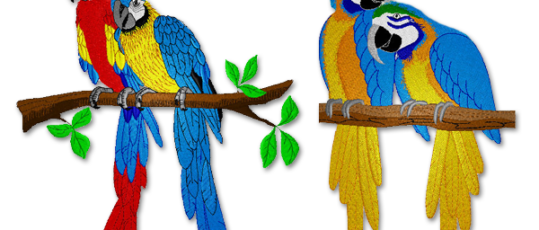Top Notch Digitizing for Embroidery: Professional Workmanship
Streamlining the Art of Embroidery Digitizing: Step-by-Step Overview
As technology proceeds to development, the digitization process has actually become extra easily accessible, allowing fanatics to bring their detailed designs to life with convenience. In this guide, we will certainly untangle the complexities of embroidery digitizing, breaking down each action systematically to streamline the procedure and empower both newbies and experienced embroiderers alike.
Understanding Needlework Digitizing Software Program
Needlework digitizing software application works as an essential tool for transforming intricate designs right into digital formats suitable with embroidery equipments, promoting specific sewing and personalization. This specific software application allows users to import various picture file styles, such as JPG or PNG, and transform them right into needlework machine-readable layouts like DST, EXP, or PES - Digitizing for Embroidery. By making use of attributes like stitch editing, padding alternatives, and string shade option, digitizing software application enables customers to manage every element of the style process
Furthermore, advanced needlework digitizing software application uses devices for creating intricate designs, readjusting stitch thickness, and incorporating complex information. Individuals can additionally sneak peek the design prior to stitching it out, making certain accuracy and reducing errors. Additionally, numerous software application provide automated functions that assist simplify the digitizing procedure, conserving effort and time.
Recognizing the capabilities of embroidery digitizing software is vital for accomplishing top notch cause embroidery projects. By mastering this device, needlework fanatics and specialists can release their imagination and bring elaborate designs to life with accuracy and performance.

Picking the Right Layout Documents
After familiarizing yourself with the capacities of embroidery digitizing software program, the next critical action in the process is picking the best layout file for your task. Digitizing for Embroidery. When picking a design data for needlework digitizing, it's necessary to take into consideration the intricacy of the style, the size of the last item, and the kind of fabric you will certainly be dealing with
For complex designs with great information, a high-resolution picture or vector data is recommended to ensure that the embroidery equipment can properly duplicate the style. Furthermore, the size of the final product plays a significant duty in picking the ideal design file. Bigger layouts may require greater resolution documents to preserve clarity and intensity.
Additionally, the kind of fabric you will certainly be embroidering on affects the selection of design file. Various fabrics might need modifications in the style file to ensure that the stitches are appropriately lined up and the design shows up as intended. By meticulously choosing the appropriate style file based upon these elements, you can set yourself up for an effective embroidery digitizing procedure.
Digitizing Tools and Methods
Utilizing specialized software application and precision strategies, digitizing tools are necessary in transforming detailed styles into embroidery-ready data. Needlework digitizing software program, such as Wilcom, Hatch, or Embrilliance, offers the necessary system to convert art work into read what he said stitch data. These programs supply functions like stitch modifying, padding choices, and lettering tools to make sure the layout translates effortlessly onto textile.
Among the key methods in digitizing is developing a clear path for the needlework machine to comply with. This entails digitizing each aspect of the design with accuracy, determining stitch kinds, thickness, and directions. By utilizing devices like digitizing tablet computers or software-specific plugins, embroiderers can achieve a high level of accuracy in their digitized styles.
Furthermore, mastering the art of underlay stitching is important for creating high quality needlework. Underlay sewing maintains the textile and develops a foundation for the design, guaranteeing that the final item is both aesthetically enticing and long-lasting. By recognizing these digitizing devices and techniques, embroiderers can boost their craft and bring complex designs to life with precision and performance.
Tailoring Stitch Kinds and Directions
The choice of stitch types can considerably affect the overall appearance and texture of the embroidered layout. By purposefully incorporating these stitch kinds, embroiderers can attain deepness and dimension in their designs.
Moreover, the instructions of stitches my response plays an essential function in boosting the visual charm of the last embroidery. By exploring with different stitch angles and patterns, embroiderers can bring their styles to life with amazing information and intricacy.
Testing and Refining Your Digitized Style
To guarantee the precision and top quality of your digitized style, complete screening and improvement are important action in the needlework digitizing process. As soon as you have actually finished the digitization of your design, it is critical to evaluate it prior to proceeding with the actual needlework. Evaluating permits you to identify any type of prospective concerns such as thread breaks, stitch thickness problems, or layout distortions that might impact the result.

After screening, it is necessary to fine-tune your digitized style based on the responses from the examination sew-out. This might include tweaking stitch settings, readjusting thickness, or making adjustments to the total style to accomplish the preferred result. By iterating through testing and refinement, you can fine-tune your digitized layout to excellence before progressing with the real needlework procedure.
Verdict
In final thought, understanding the art of needlework digitizing calls for a complete understanding of the software program, choosing the ideal layout data, making use of digitizing tools and techniques, customizing stitch kinds and directions, and testing and fine-tuning the digitized layout. By adhering to these steps, embroiderers can streamline the digitizing procedure visite site and create top notch stitched designs with precision and performance.